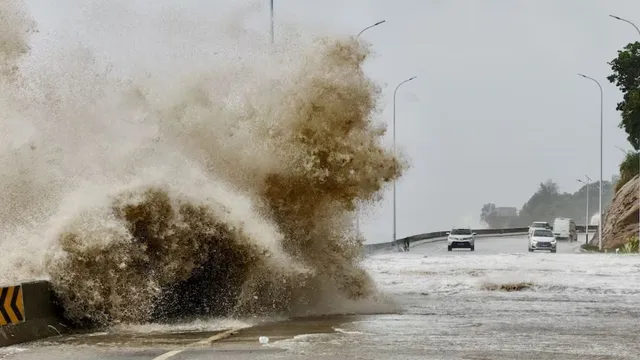- By Kamal Kumar
- Wed, 28 Aug 2024 12:00 AM (IST)
- Source:JND
Typhoon Shanshan, a ferocious cyclonic storm with gusts up to 216 km per hour, has started causing large-scale disruptions as it approaches the Amami archipelago on the Southern Japanese coast. The typhoon has caused severe weather conditions, such as heavy rainfall and high-speed winds, creating massive travel disruptions.
The iconic high-speed bullet train of Japan also took a hit due to Shanshan. The train service between Hamamatsu and Toyohashi was temporarily suspended due to the heavy rains accompanied by powerful winds, however, they were later restored.
Meanwhile, other sections of the high-speed rail network, along with local train services, experienced delays, according to reports from Central Japan Railway and West Japan Railway.
Further suspension or delays in bullet train services could be experienced depending on the path of the Typhoon, the rail operators said on Tuesday. Air travel also took a hit as major air carriers in the country cancelled flights in the wake of Typhoon Shanshan.
Flights cancelled, and bullet trains shut down as Southwestern #Japan braces for #TyphoonShanshan#Typhoon #Asia #Japon #Rain #Wind #Weather #Viral #Climate pic.twitter.com/7TYqbKxb88
— Earth42morrow (@Earth42morrow) August 27, 2024
A total of 116 flights were cancelled for Tuesday and Wednesday, consisting of six international flights. A major domestic carrier - All Nippon Airways cancelled 68 domestic flights this week from Wednesday to Friday due to the disruptions caused by Shanshan. The typhoon has forced airlines to modify their schedules, significantly impacting flights to and from Kagoshima, the Amami Islands, and Osaka Airport.
Typhoon #Shanshan is now equivalent to a category 3 major hurricane 🌀
— Zoom Earth (@zoom_earth) August 27, 2024
On Thursday the typhoon will strike Kyushu, Japan, bringing severe winds, torrential rain, and dangerous storm surge.
Shikoku and Honshu are also at risk of flooding as the system moves inland. #台風10号 pic.twitter.com/mRy4psRMhr
ALSO READ: Y Chromosome Shrinking: Are Men Going To Extinct From Earth? What This Latest Research Suggests
The Japan Meteorological Agency (JMA) has issued urgent weather alerts, predicting that Amami Island could receive up to 400 millimetres (15.7 inches) of rain in the next 24 hours, while the Kyushu region may see up to 500 millimetres (19.7 inches) between Wednesday and Thursday. The agency has strongly advised residents to be on alert for severe conditions, including powerful winds, large waves, landslides, flooding in low-lying areas, and possible river overflow.

